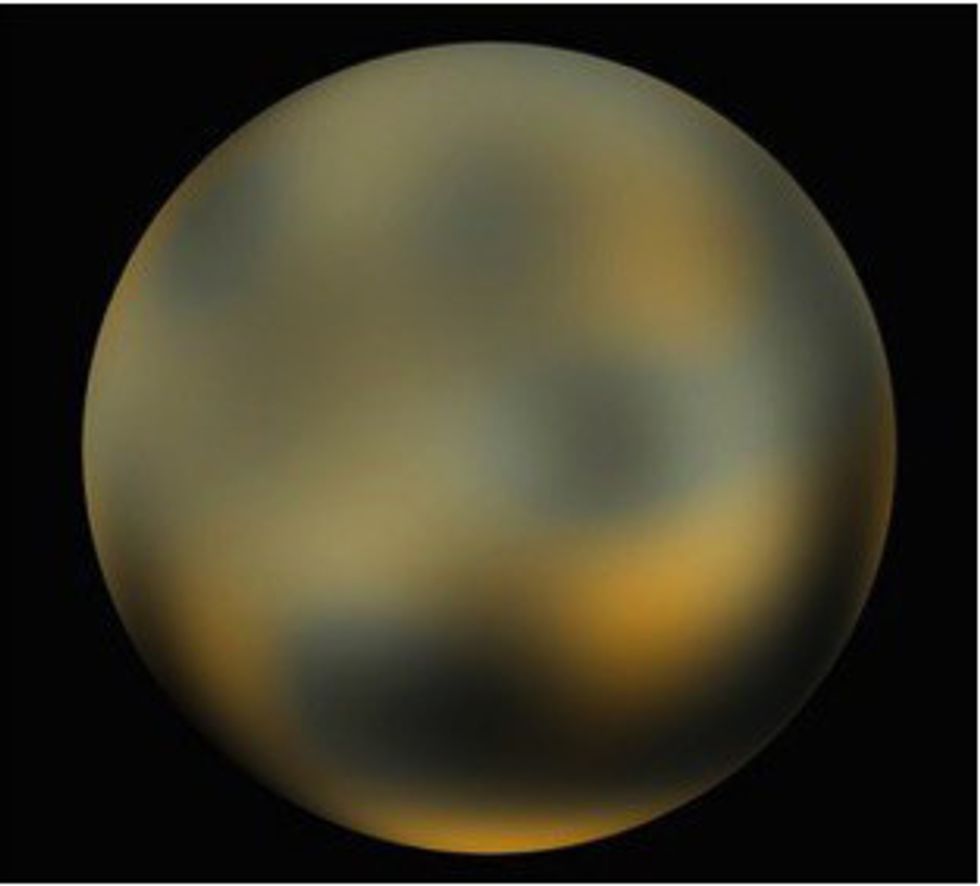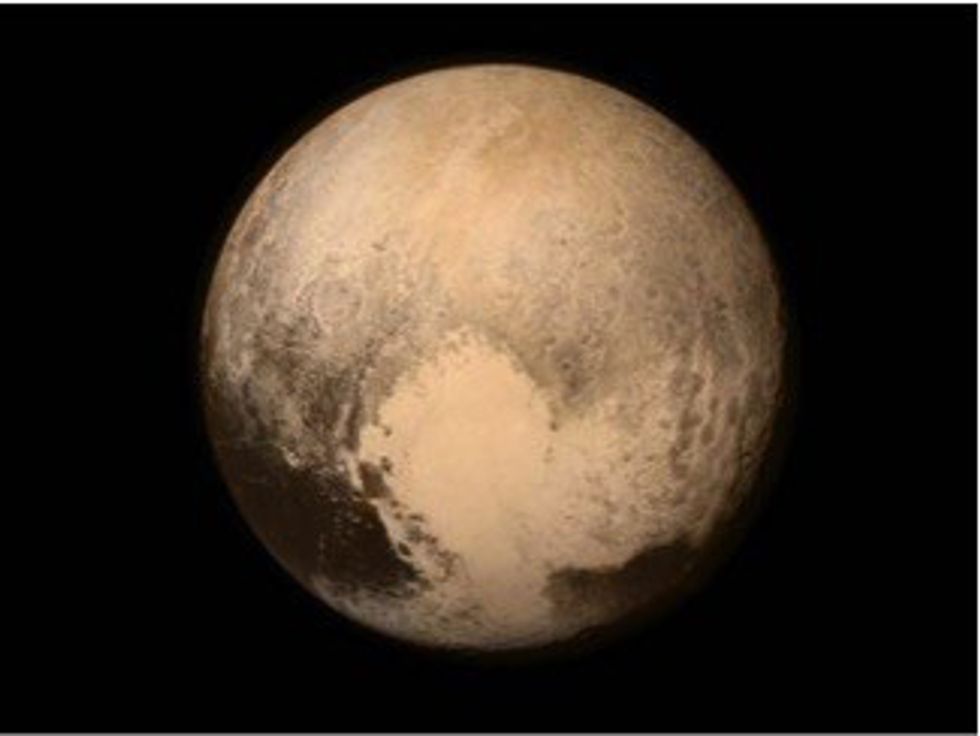I know what you’re thinking, “Oh no, not another stupid article about stupid NASA and that stupid picture of stupid Pluto.” I get it. Your Facebook feed is filled with pictures of that boring little ice nugget and you can’t seem to open a newspaper without seeing an update on New Horizon’s mission. We haven’t paid this much attention to Pluto since we dropkicked him out of our Solar System in 2006. Because this photo has been so widely shared, we have become desensitized to how unbelievably amazing it is. Let’s just take a quick sec to marvel at the science, passion, and human curiosity that worked to procure this incredible image of our former ninth planet.
On January 19, 2006, NASA launched New Horizons with the hope of learning more about the mysterious distant world of Pluto. We launched it from the Earth at a little over 36,000 mph (the fastest speed reached by a manmade object), slingshot it into the space using a gravity assist from Jupiter, and watched it travel 3 billion miles before flying by Pluto on July 14, 2015. The spacecraft is equipped with all kinds of cameras, satellites, and science-y instruments for gathering information about our universe. (Fun Fact: the ashes of Clyde Tombaugh, the guy who discovered Pluto, are also on the ship. While I understand the sentimentality of this chosen burial ground, I think Clyde missed a unique opportunity to cremate his body by rocketing it toward the Sun, a feat I intend to perform as I near death 300 years from now after downloading my brain to the Human Network where I can exist in cyberspace for all eternity.)
NASA receives data from New Horizons every day and it’s going to take 16 months for Earth to gather all the information from the Pluto flyby. Even though it has only been a week since New Horizons reached its destination, we’ve already learned so much from this mission.
For one thing, our image of Pluto has changed from this
to this.
Even though New Horizons uses technology from the 90’s, it only took four and a half hours for that new image of Pluto to reach us. To put that in perspective, it would take a sprinting Usain Bolt 12,328 years (give or take a day) to take that pic of Pluto and run it back to us (24,656 years if you include his journey there). Science is incredible, yo.
We observed Pluto’s geography in more detail than ever before, studied ice caps and canyons, and even discovered that he is a tad fatter than expected. The good news for Pluto is that it’s all water weight (frozen water weight), because he is composed of more ice than we originally thought. He also has a heart-shaped region with an icy plain in its center and may even have active volcanoes scattered about his surface, which clearly signifies that he is still deeply upset and angered by his exile from Planet-hood.
This mission is important, not only because it provides us with information about Pluto, but also because we can study a previously unexplored region of our universe. Pluto is a dwarf planet in the Kuiper Belt and, as it turns out, being a member of the Kuiper Belt is pretty freaking cool. So cool, in fact, that most of the objects in the Kuiper Belt are frozen. This icy belt encircles our Solar System, flattering our figure while holding up our khakis. New Horizons will spend the remainder of its working life traveling through this region. In learning more about the Kuiper Belt, we will gain insight into the conditions and materials present during the creation of our Solar System.
We are living in a wonderful time driven by technological advancement and human curiosity. With every mission into space, we learn a bit more about this mind-bogglingly universe we like to call our own. While congratulating the New Horizons team, Stephen Hawking said, “We explore because we are human, and we want to know.” There are many things I want to know, like why some people eat pizza with forks and knives, or what penguins thought the first time they saw humans, but there is one question all humans share. The Big Question: Where do we fit in the Universe? I don’t know if we’ll ever have an answer, but missions like New Horizons help the vast unknown make a little more sense. So let’s tip our hats (if you’re wearing a beanie, just take it off) to NASA and go forth to explore and be fruitful and multiply, or whatever.























